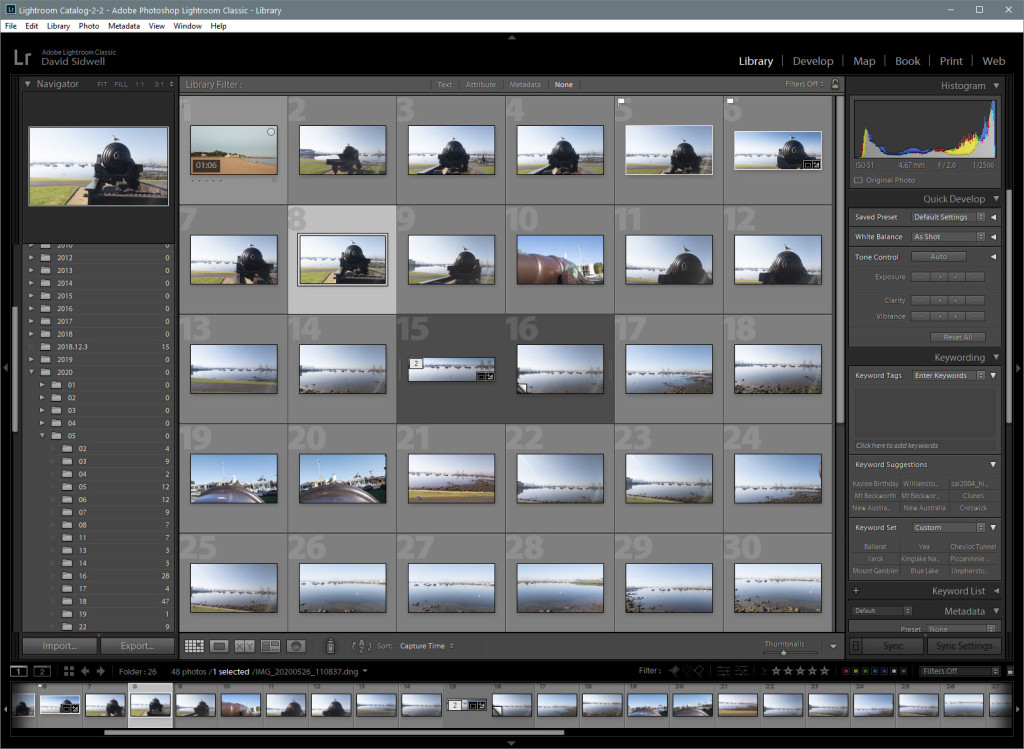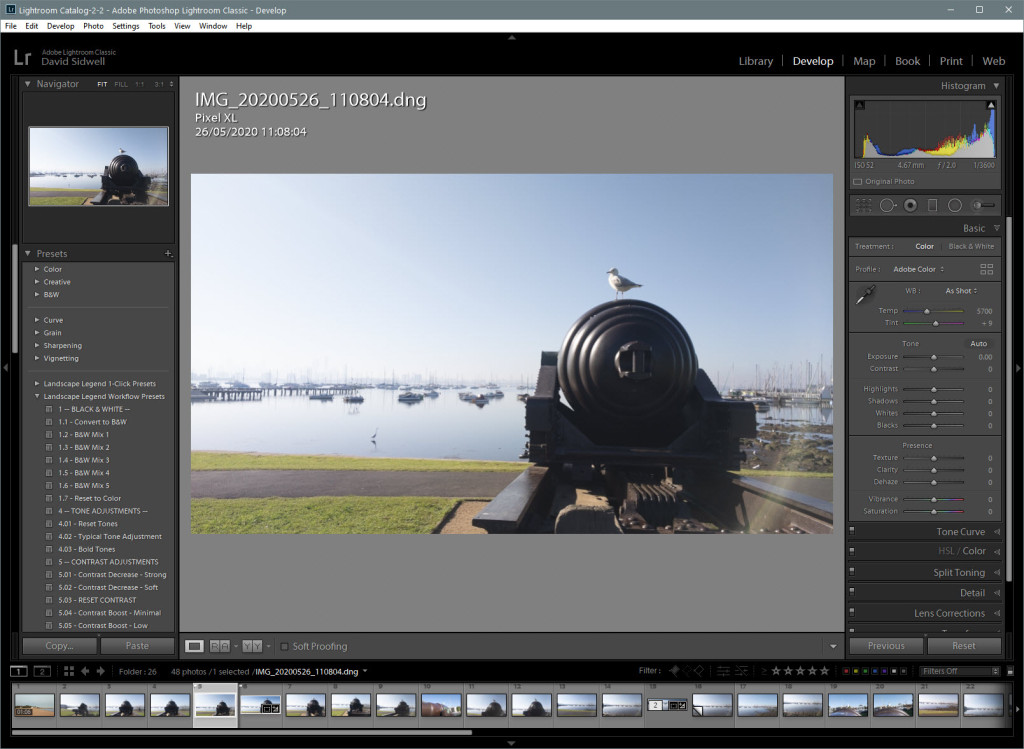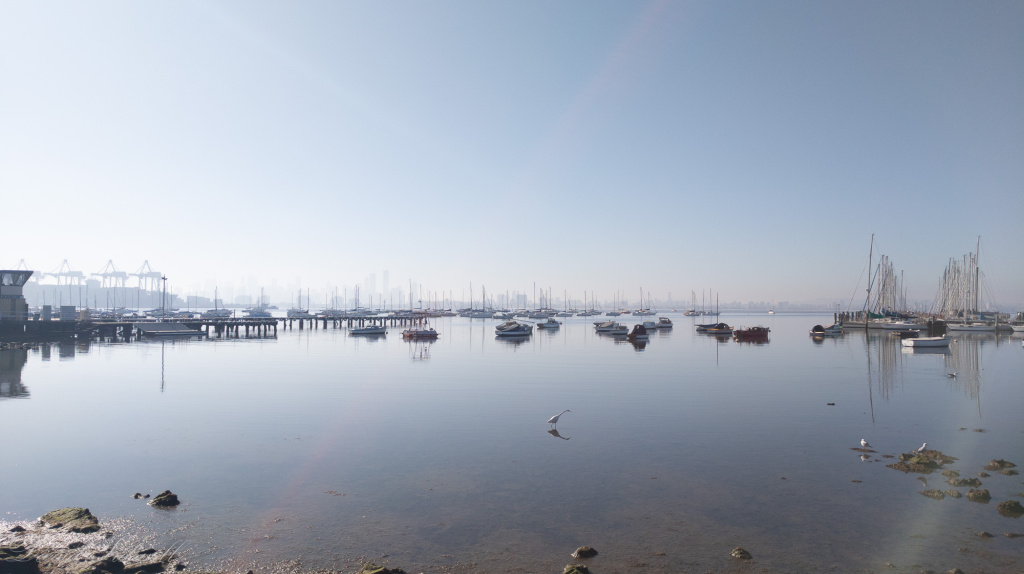There are two programs I use for photography-related work. Both are from Adobe. It may surprise you which one I overwhelmingly use the most. They are:
- Photoshop
- Lightroom
99% of the time I’m in Lightroom, despite people talking about things being Photoshopped.
As a simplistic overview Lightroom works on the whole of the photo, Photoshop does some of that, but it lets you manipulate individual parts/sections of the photo, as well as merge photos (and part of photos etc).
Lightroom is also a librarian; you can apply keywords, ratings, free text and then quickly find things by these values as well as the date, camera etc. It’s actually a database, so very quick for searching, sorting etc.
Most importantly Lightroom does NOT change the original photo (!).
So, if you…
- Straighten a photo by 6 degrees
- Crop 14% and make it more ‘wide looking’
- Darken the light bits of the image by decreasing the Highlights by 12 units
- Nudge up the Blue colours a bit
- Make it more Vibrant
- Sharpen it by 12 units
- Remove some of the ‘noise’ (speckles) the camera adds
…Lightroom applies those changes to what you are seeing but doesn’t change the photo file at all. It records the exact changes you made – viz the steps you did – and saves them separately from the photo file. A bit like a macro in Word or Excel.
So here’s Lightroom in the default Library view:

And when you select an image to do more editing (Develop):

And here’s a before and after image, from the phone:

text

Other Important Things – Photoshop and Camera Raw
I use Photoshop if I want to
- Add text in
- Merge part of another image in (creating something fun)
- Paint something out (digitally remove it)
- Digitally change the image in other ways (distort it, make part of it black and white, change the colour of part of it)
- Clean up old photos (remove scratches, marks, paper tears/folds, restore the colours). I don’t do much of this as it’s very slow going and not really my thing.
Camera Raw
Camera Raw is a generic type of image capture format that keeps a lot more information than the normal .jpg file. I think we say Camera Raw to differentiate from just saying a raw image (a .jpg could be a ‘raw’ image, meaning straight from the camera). I say generic as each manufacturer probably has their own Camera Raw format.
The files are much larger than .jpg, but they give me a much broader range of changes I can make on the PC. I can actually change the exposure after I took the photo; almost impossible with .jpg. So if it was too dark, I can lighten it up. Some people call them Digital Negatives, but that can be confusing as Adobe uses that for something else.
Camera Raw images record all the information that the sensor saw; A .jpg compresses it; ‘throwing away’ a fair bit of the captured data to shrink the file down – from about 8 MB down to about 2 MB in the case of my phone.
Up until recently Camera Raw was the domain of the ‘stand alone’ cameras. But a recent update to Android makes it available to phones, assuming your phone’s camera can support it. Mine does; being from Google – who make Android – helps
You will need speciality software to properly process/edit Camera Raw images. Some of it is free and some costs money (Lightroom and Photoshop). It’s a step up and has a learning curve, but the results are well worth it.
